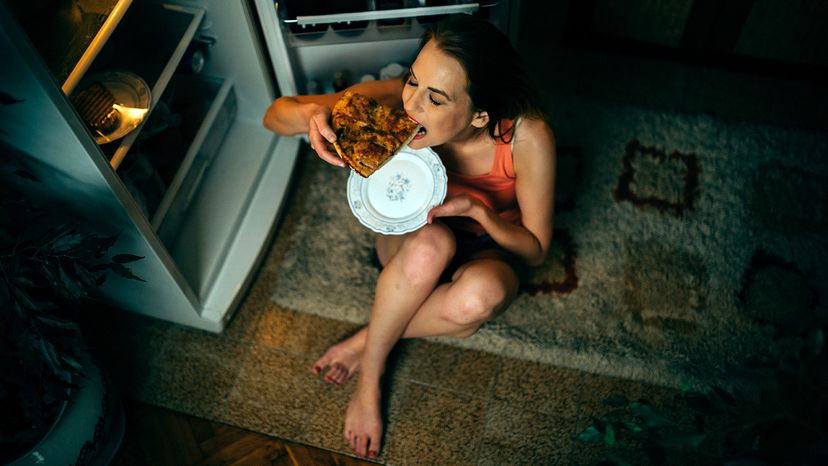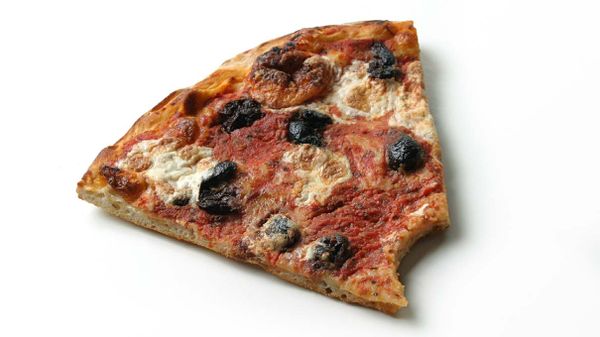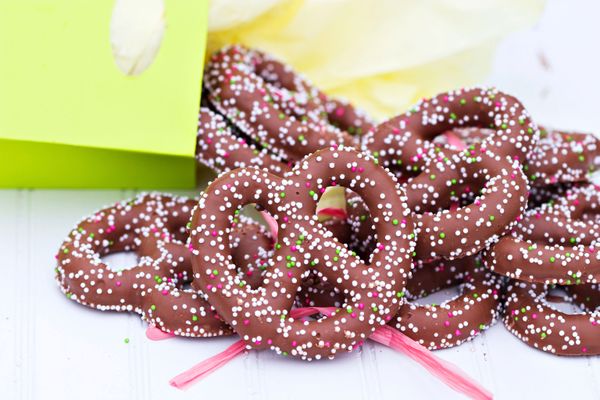
If you've ever found yourself munching on a cold pizza after a long night of drinking, you're far from alone. And if you've ever hankered for an adult beverage (or several) after a particularly tasty meal, you're in good company too. But it turns out there's more to the connection between high-fat foods and alcohol cravings than sheer coincidence or lowered inhibitions. Those cravings could be due to the hardwiring in your head.
According to research from Pennsylvania State University College of Medicine, heavy drinking and high-fat "junk" food consumption seem to share a brain circuit. While previous research has suggested alcohol consumption affects the same areas of the brain that control overeating, this new study on mice looks specifically at a variety of factors, including alcohol versus water intake and the role of a high-fat diet versus a "normal" rodent diet. The study results were presented in April at the American Physiological Society's (APS) annual meeting at Experimental Biology 2019 in Orlando, Florida.
Advertisement
"Obesity and alcoholism, two of the most common chronic disorders in the United States, may be behaviorally linked as binge intake of palatable diets, such as diets high in fat, and binge alcohol intake may utilize the same neurocircuitry," the researchers said in a press statement.
For the purposes of this eight-week study, scientists observed three groups of early adult male mice. The "high-fat diet" group had nonstop access to rich foods and restricted access (four hours per day, four days a week) to drinking water mixed with alcohol. The "normal diet" group ate a typical mouse diet and had the same limited access to the alcohol-water mixture. The "binge diet" group had limited access to the high-fat diet and alcoholic drink, plus access to the normal diet when high-fat foods were restricted.
A little fun fact about that alcoholic mixture: Researchers incrementally increased the ratio of alcohol to water over the course of the eight-week study. So while the mixture started as a 10 percent alcoholic concoction, it eventually reached a full 20 percent. And while all the animals had unlimited access to pure water throughout the experiment, some interesting things happened over the course of the trial.
Let's start with the "binge diet" group. Not only did these mice exhibit the same pattern of weight gain and loss associated with binge eating, but they also drank more alcohol than water, indicating they'd developed a pretty clear preference for booze over H2O. The other two groups drank significantly less alcohol. So what's the deal? According to researchers, the results suggest that restricting access to high-fat foods (remember, the "binge diet" group only had limited time with rich foods while the "high-fat diet" group could eat them any time they wanted) promotes binge eating behavior. That binge eating behavior appears to subsequently trigger binge drinking behavior through activation in the same area of the brain.
"Given the increasing rates of binge drinking and overall obesity rates in the U.S. in recent years, we think this new mouse model will be of critical importance in the near future," wrote author, Caitlin Coker, M.S.
While it's important to remember that this is a rodent study, and additional research will need to be done to further understand the complex connections at play, it's worth keeping in mind that eating, drinking, weight gain and loss are complicated, interconnected issues.
Advertisement


